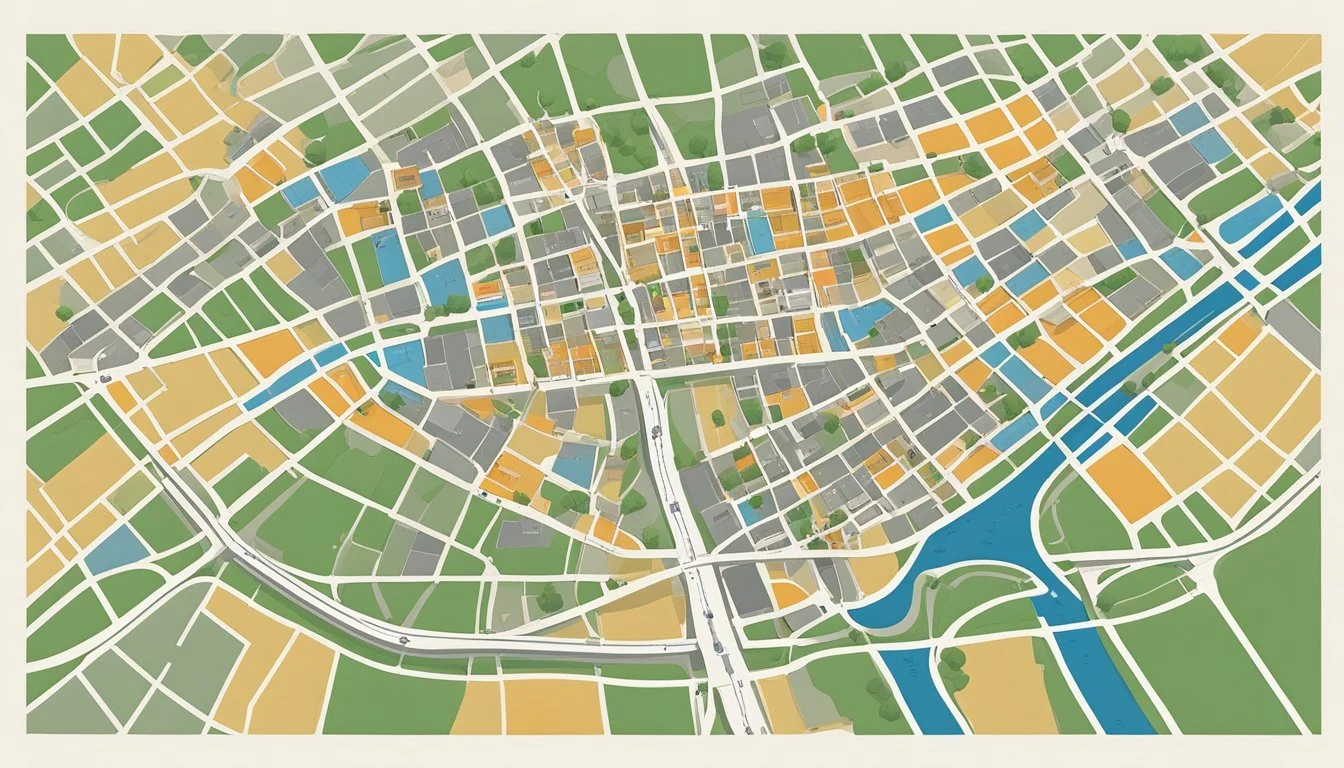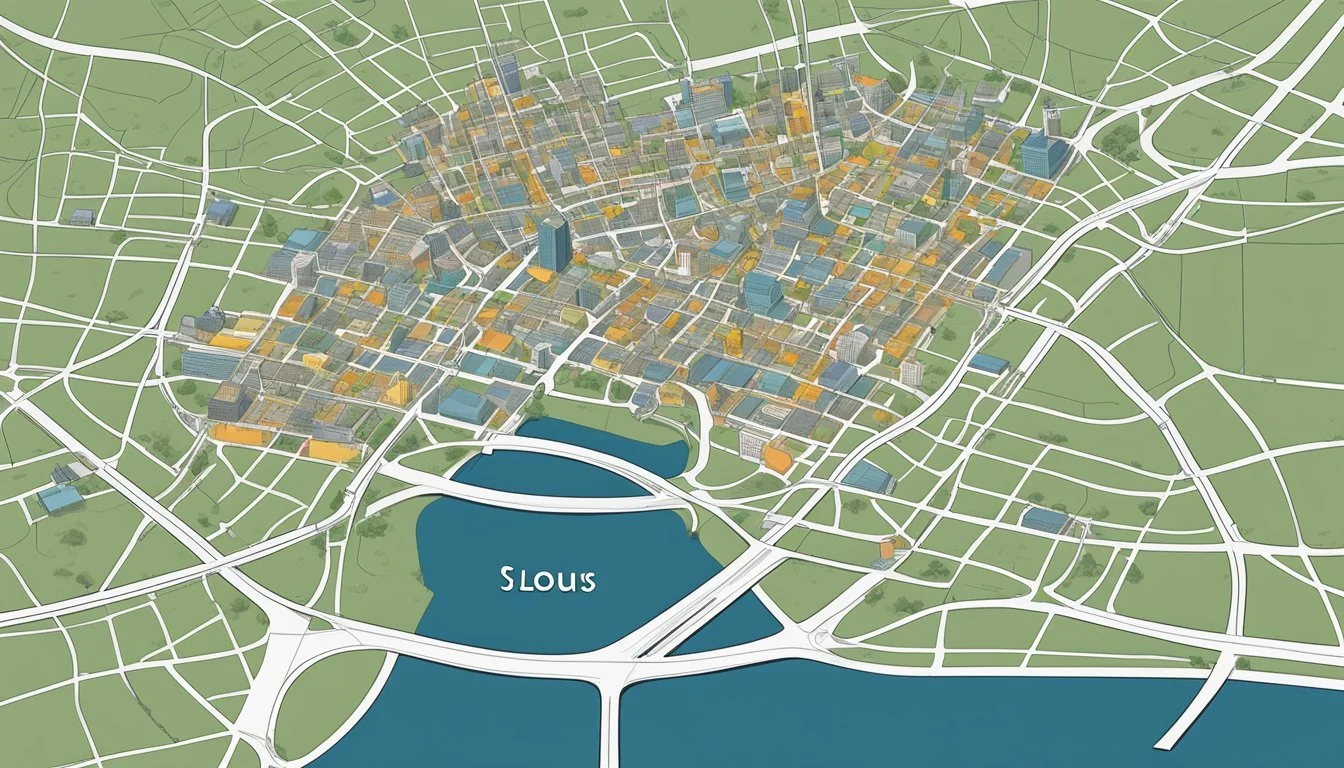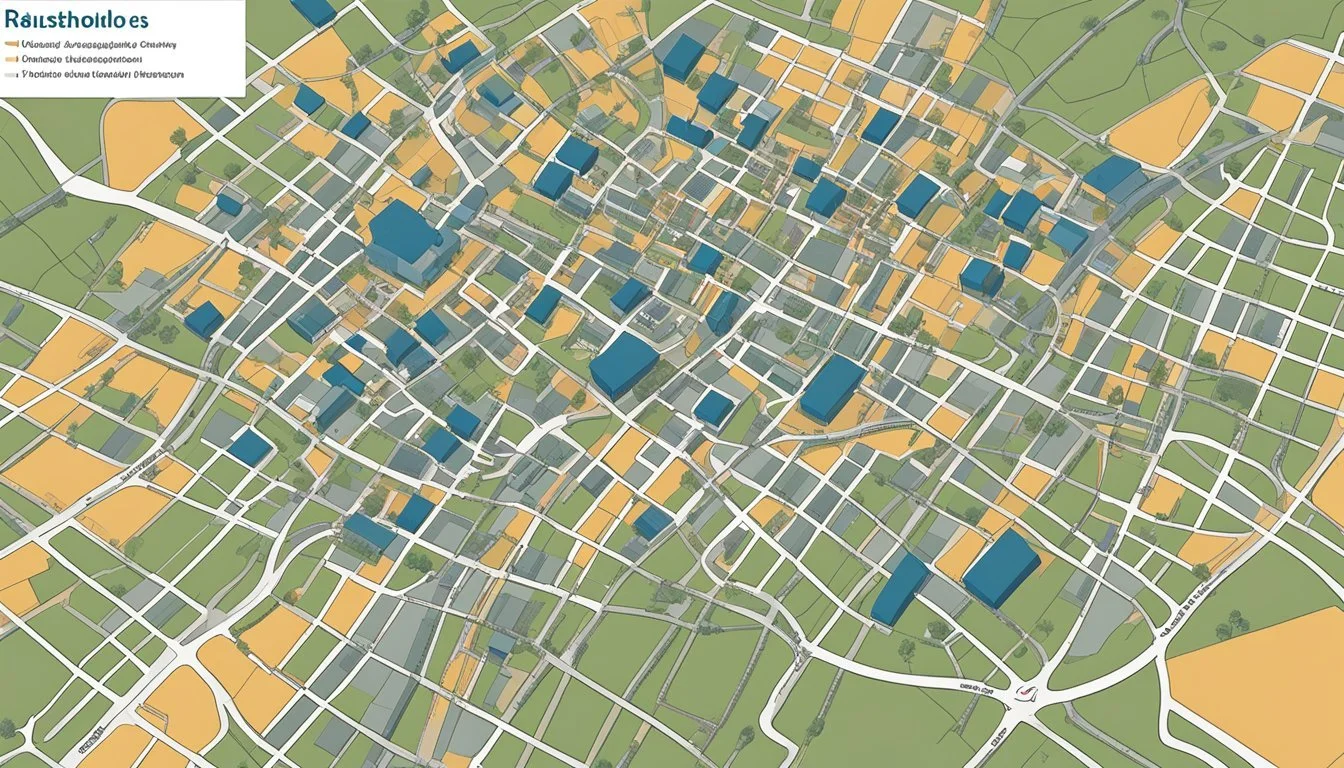Maury Travis: 6 St. Louis Neighbourhoods Forever Changed by the Strangler's Actions
The Lasting Impact of a Serial Killer
Maury Travis, known as the St. Louis Strangler, left an indelible mark on the city's landscape during his reign of terror in the early 2000s. His horrific crimes targeted vulnerable women and sent shockwaves through multiple neighborhoods across the metropolitan area. The impact of his actions continues to reverberate years after his death.
Six St. Louis neighborhoods were profoundly affected by Travis's murders, experiencing lasting changes to their social fabric and sense of security. These communities grappled with fear, grief, and the challenge of healing in the wake of such senseless violence. The legacy of the St. Louis Strangler case serves as a somber reminder of the far-reaching consequences of violent crime on urban communities.
1) St. Louis County
St. Louis County was significantly impacted by Maury Travis's crimes. The area became a focal point of the investigation and manhunt for the serial killer.
Travis resided in Ferguson, a city within St. Louis County. His home on Mable Avenue became a crime scene after his arrest in 2002.
Law enforcement agencies across the county collaborated to track down the killer. The St. Louis County Police Department played a crucial role in the investigation.
The St. Louis County Jail housed Travis following his arrest. It was in this facility where he ultimately took his own life on June 10, 2002.
The case brought increased attention to issues of public safety in St. Louis County. It highlighted the need for improved resources and strategies to protect vulnerable populations.
Community organizations in the county rallied to support victims' families and raise awareness about violence against women. This led to new initiatives aimed at prevention and support services.
2) West Florissant Avenue
West Florissant Avenue is a major thoroughfare in St. Louis County, Missouri. It runs through the cities of Dellwood and Ferguson, serving as a vital link for local communities.
The avenue has a rich history dating back many years. It has long been an important commercial corridor for the area, lined with various businesses and residential neighborhoods.
In recent years, West Florissant Avenue has been the focus of revitalization efforts. The West Florissant Avenue Great Streets Project aims to transform the street into a safer, more accessible space for all users.
This initiative seeks to improve conditions for vehicles, pedestrians, cyclists, and transit riders. The project involves collaboration between local municipalities, St. Louis County, and other stakeholders.
Safety is a key concern along West Florissant Avenue. The street sees significant daily traffic, with approximately 30,000 vehicles and over 1,000 pedestrians, cyclists, and transit users.
The Great Streets Project includes a range of transportation improvements designed to address these safety challenges. It also aims to enhance mobility and support economic revitalization in the area.
3) Dellwood
Dellwood, a small suburban city in St. Louis County, Missouri, found itself unexpectedly thrust into the spotlight during the Maury Travis investigation. This quiet community of around 5,000 residents became associated with the serial killer's activities.
Travis resided in a house on Dellwood Court, a seemingly ordinary street in this peaceful neighborhood. The discovery of his connection to the area sent shockwaves through the tight-knit community.
Law enforcement presence increased significantly in Dellwood during the investigation. Police combed the area for evidence and potential crime scenes, disrupting the usual tranquility of the suburb.
The revelation that a serial killer had been living among them left many Dellwood residents feeling vulnerable and unsafe. Community meetings were held to address concerns and discuss safety measures.
Local businesses in Dellwood experienced a temporary downturn as media attention focused on the area. Some residents reported feeling stigmatized by their association with the Travis case.
The community worked to reclaim its identity in the aftermath of the investigation. Neighborhood watch programs were strengthened, and community outreach efforts increased to restore a sense of security.
4) Ferguson
Ferguson, a suburb of St. Louis, was not directly impacted by Maury Travis's crimes. The majority of his known victims were found in other areas of the city and surrounding counties.
However, Ferguson's proximity to St. Louis meant residents were affected by the atmosphere of fear that gripped the region during Travis's active period. Local law enforcement likely increased patrols and community outreach efforts in response to the serial killer's actions.
The case brought attention to issues of drug addiction and sex work in the broader St. Louis area, including Ferguson. This may have led to increased awareness and discussions about these topics within the community.
While Ferguson was not a primary location in the Maury Travis case, the events likely influenced the city's approach to public safety and community policing. The case served as a stark reminder of the importance of vigilance and cooperation between law enforcement and residents.
5) Berkeley
Berkeley, a small city in St. Louis County, Missouri, was deeply affected by the crimes of Maury Travis. The community was shocked to learn that one of their own residents was linked to a series of brutal murders.
Travis lived in Berkeley, operating undetected for years while carrying out his heinous acts. His arrest and subsequent death sent ripples through the tight-knit neighborhood, leaving residents grappling with the reality that a killer had been in their midst.
The case brought unwanted attention to Berkeley, as media outlets and true crime enthusiasts focused on the area. Local authorities faced scrutiny over how Travis had evaded capture for so long while living in their jurisdiction.
In the aftermath, Berkeley residents became more vigilant and community-oriented. Neighborhood watch programs expanded, and local law enforcement increased their presence to reassure the public.
The Travis case also sparked discussions about the vulnerability of sex workers and the need for better support systems. Berkeley community leaders worked to address these issues and improve safety for all residents.
6) Jennings
Jennings, a city in St. Louis County, Missouri, felt the impact of Maury Travis's crimes. The community experienced heightened fear and anxiety during his active period from 2000 to 2002.
Travis targeted vulnerable women in the area, particularly those struggling with addiction. His actions caused residents to be more cautious and wary of strangers.
Local law enforcement increased patrols in Jennings, especially in areas known for drug activity. This led to a temporary reduction in visible street crime but also strained police resources.
Community outreach programs in Jennings expanded their efforts to support at-risk individuals. Organizations focused on addiction recovery and women's safety saw increased participation.
The aftermath of Travis's crimes prompted Jennings officials to improve street lighting and install additional security cameras in high-risk areas. These measures aimed to deter criminal activity and increase residents' sense of safety.
Jennings schools implemented new safety protocols and education programs. These initiatives taught students about personal safety and the importance of reporting suspicious activities.
The community's response to Travis's actions fostered a stronger sense of unity among Jennings residents. Neighborhood watch programs gained popularity, with more citizens actively participating in local safety efforts.
Historical Context of Crime in St. Louis
St. Louis has grappled with crime for decades, influenced by various socioeconomic factors and marked by notable cases that shaped the city's law enforcement approach.
Socioeconomic Factors
St. Louis experienced significant demographic shifts in the mid-20th century. White flight to the suburbs led to urban decay and concentrated poverty in certain neighborhoods.
High unemployment rates and limited economic opportunities contributed to increased crime rates. The crack cocaine epidemic of the 1980s and 1990s further exacerbated these issues.
Inadequate funding for education and social services left many communities underserved. This created a cycle of poverty and crime that proved difficult to break.
Previous Cases
The 1970s saw a rise in organized crime activity in St. Louis. The Syrian Mob and Italian Mafia fought for control of illegal gambling and other illicit activities.
Several high-profile murder cases shocked the city in the 1980s. The Kerry sisters' murders in 1982 remained unsolved for decades, highlighting challenges in police investigations.
The 1990s brought a surge in gang-related violence. Drive-by shootings and turf wars became increasingly common, prompting new law enforcement strategies.
Serial killer Joseph Paul Franklin targeted St. Louis in 1977, killing one and wounding others. His case underscored the need for improved coordination between jurisdictions.
Maury Travis: The Man Behind the Crimes
Maury Troy Travis, born on October 25, 1965, was a hotel waiter who became one of St. Louis' most notorious serial killers. His reign of terror targeted vulnerable women and left a lasting impact on multiple communities.
Early Life and Background
Little is known about Travis' early years. He grew up in the St. Louis area and had a history of criminal behavior. In 1989, Travis was convicted of robbery and served time in prison.
After his release, he found work as a hotel waiter. Outwardly, Travis appeared to lead a normal life. However, he harbored dark impulses that would soon manifest in horrific ways.
Travis lived in Ferguson, Missouri, a suburb of St. Louis. His home would later become the site of gruesome discoveries related to his crimes.
Timeline of Murders
Travis' known killing spree began in 2000 and continued until 2002. He targeted sex workers and women struggling with drug addiction in St. Louis.
Travis lured victims to his home with promises of money. There, he tortured and murdered them, often filming his crimes.
Investigators linked Travis to at least 12 murders, though he claimed to have killed 17 women. Some of his victims included:
Mary Shields, 61
Brenda Beasley, 33
Yvonne Cruse, 50
Alysa Greenwade, 34
Travis dumped many bodies in East St. Louis and other nearby areas. In 2002, he sent a map to a newspaper revealing a victim's location, which led to his capture. Travis took his own life in jail on June 10, 2002, before facing trial.
Impact on Local Communities
Maury Travis's crimes profoundly affected several St. Louis neighborhoods. Residents experienced heightened fear and anxiety, leading to changes in daily routines and community dynamics. Local organizations stepped up to provide support and implement safety measures.
Changes in Neighborhood Safety Perception
Travis's actions instilled a deep sense of unease in affected areas. Many residents, especially women, became wary of walking alone at night. Some neighborhoods saw increased use of security systems and outdoor lighting. Community watch programs gained popularity, with neighbors looking out for each other more actively.
Local police increased patrols in high-risk areas. This visible presence helped reassure some residents but also served as a constant reminder of the danger. Some businesses adjusted their hours, closing earlier to protect employees and customers.
The perception of certain areas as "unsafe" lingered long after Travis's arrest. This impacted property values and local economies in some neighborhoods.
Community Support Initiatives
In response to the trauma, various support initiatives emerged. Local counseling centers offered free or low-cost therapy sessions for residents struggling with anxiety or fear. Churches and community centers organized support groups for those affected by the crimes.
Neighborhood associations held safety workshops, teaching self-defense techniques and street awareness. Some areas implemented buddy systems for late-night workers. Local businesses donated to victim support funds and safety improvement projects.
Community leaders worked to rebuild trust and a sense of security. They organized block parties and neighborhood clean-up events to foster unity. These efforts helped communities heal and reclaim their spaces from the shadow of Travis's crimes.








